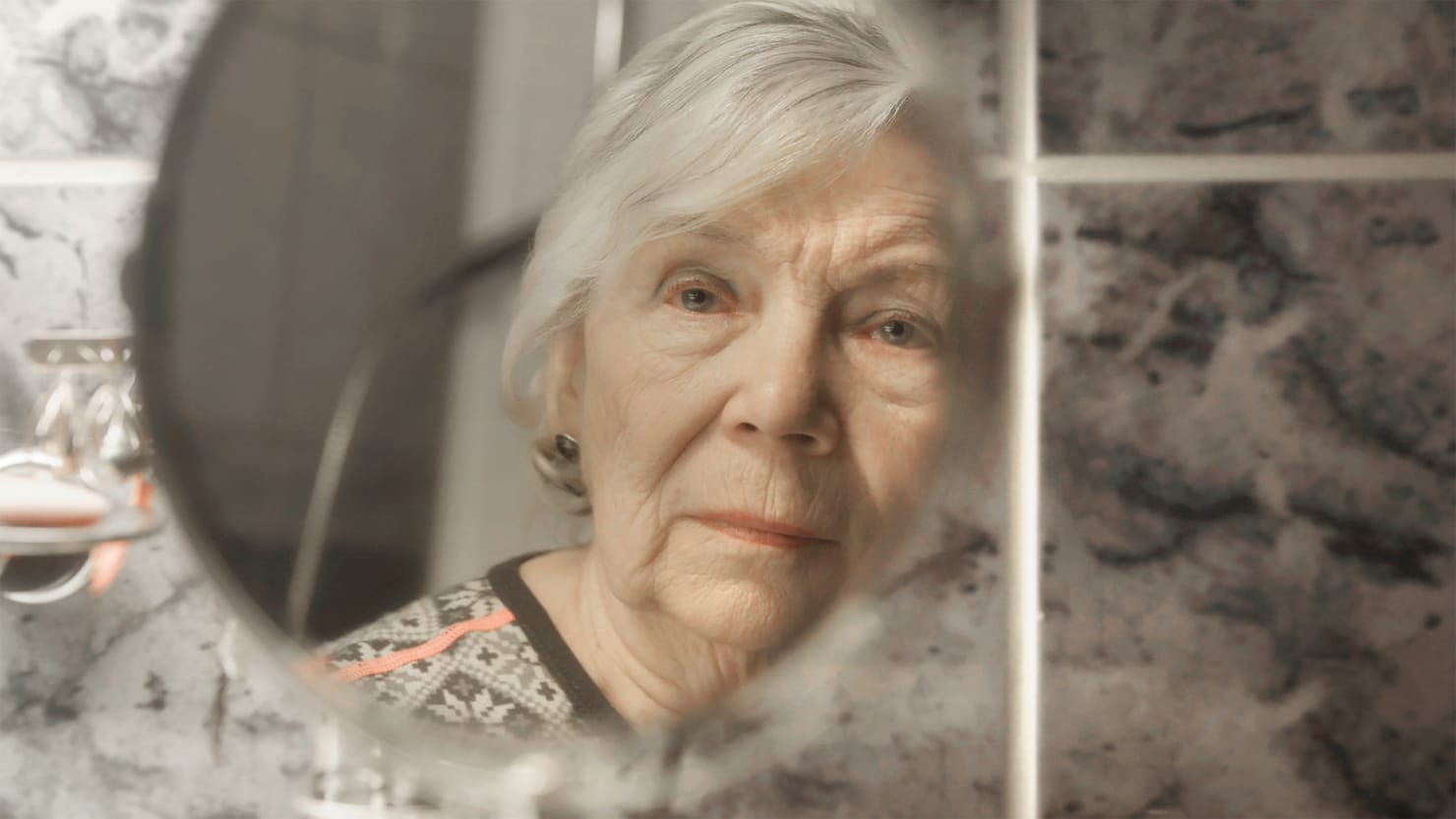The Gullspång Miracle begins with documentarian Maria Fredriksson instructing her subjects, Norwegian sisters Kari and May, to do multiple takes of their opening scene—a stark vision of a filmmaker trying to manage her non-fiction material. Yet no matter how hard one attempts to orchestrate real life, it has a habit of evolving in its own insane manner—and that certainly proves to be the case with this film, whose astonishing twists and turns transform what appears to be one sort of unbelievable fable into an altogether different eye-opener.
Craziest of all, however, is that by the time it reaches its wholly unexpected conclusion, Fredriksson’s documentary suggests that perhaps our stories aren’t governed by fate, chance, or a higher power. Instead, with a bit of effort (some of it honest, some of it not), we have the power to write the narratives we want—or, at least, best suit our needs.
A standout at this year’s Tribeca Film Festival (where it premieres on June 11), The Gullspång Miracle proceeds from a flabbergasting development. During a visit to see her sister Kari in Sweden, May hurt her tailbone while riding a water slide at a local amusement park. Raised a devout Christian, May took this as a sign that God wanted her to remain in Sweden (a pious notion no doubt reinforced by the ride’s car, which was shaped like a whale). She persuaded Kari to help her find an apartment and, just as importantly, a particular still-life painting to hang in it. Visiting one such residence in Gullspång, they found the exact painting May had envisioned, along with another two beside it. “Jesus Christ, there are three of them,” Kari thought, taking this as a symbolic representation of the holy trinity. “It means something!” Both women were sure a momentous event was about to occur.
They were right. Months later, upon going to the realtor’s office to sign paperwork for the apartment, they met the seller, and couldn’t believe their eyes: the woman was the spitting image of their deceased older sister, Lita. “It was a miracle, and it was just the beginning,” says Kari. In that regard, she was also correct. The doppelganger’s name was Olaug, and until the age of 18, everyone had called her Lita. She also shared the same birthdate as Kari and May’s sibling. And as Olaug eventually learned, she had been adopted by her well-to-do parents in northern Norway when she was just an infant. Further implying that something strange was afoot, Olaug’s birth and baptismal certificates boasted erroneous dates (for reasons she couldn’t comprehend), and when she, Kari, and May took a DNA test, it came back a match. By all accounts, Olaug was a long-lost member of their family.

Ballad Film
How could this be? Picking up with the trio (and their relatives) in the aftermath of this revelation, The Gullspång Miracle presents a rather reasonable (if astounding) explanation: Lita and Olaug were twins, and in 1941 Norway, their parents had split them up in order to prevent occupying Nazi forces—who loved experimenting on twins—from abducting them. Lita’s nanny remembers being told that the infant girl’s sister had been delivered stillborn, and the pain on Olaug’s face upon hearing this is echoed in additional snapshots of the now-elderly woman as she wrestles with her parents’ abandonment, her lifelong inkling that she was missing something (or someone), and the feeling that she’s a ghost in her own skin. Compounding matters, Kari, May, their brother Arnt, and Lita’s daughter Trine can’t help but view Olaug as their resurrected relative, especially given that she boasts Lita’s face, features, and idiosyncratic mannerisms.
This is, amazingly, just the start of The Gullspång Miracle’s shockers. Kari and May inform Olaug that Lita was found dead on July 29, 1988, on the banks of Lake Sigernes in Kongsvinger. Because of the pill bottles found around her body, Lita’s demise was deemed a suicide. If that didn’t hurt their religious clan enough, they were told that shortly before taking her life, Lita had been embroiled in an embezzlement scandal at work that coincided with her split from partner Steinar. Confident that her twin wouldn’t have killed herself, Olaug investigates, and as Oslo police officer Anne-Grethe pronounces in a new interview, there actually was more to this story: Unbeknownst to Kari and May, a subsequent autopsy had determined that Lita died due to heart failure. Unfortunately, though, that bombshell also didn’t make total sense, especially in light of the pill bottle-littered crime scene and claims from witnesses who, today, forward a complicated account of Lita’s final days.
The Gullspång Miracle is a cinematic Matryoshka doll, and director Fredriksson recounts her layered saga with an intimacy that can be downright awkward, especially once Olaug begins to clash with her new siblings, whom she disapprovingly views as dim, poor, and overly devout. That friction soon leads to questions about not only the legitimacy of their connection, but whether everyone is being completely sincere about the role they’re playing in this affair. At the same time, the film slowly mutates from a fairy-tale soap opera into a possible true-crime murder mystery, with Olaug—and, later, Kari and May—convinced that Lita was the victim of a killer who may have been close to her.
In The Gullspång Miracle’s closing passages, the real, the manufactured, and the otherworldly coalesce in ways that confound rather than enlighten, and director Fredriksson never strains to tie things up in a nice bow. On the contrary, in response to one momentous incident, she literally interrupts the action to express her distressed confusion over what’s going on, and her growing suspicion that she’s being duped. Moreover, the fact that Fredriksson’s on-camera presence isn’t always deliberate winds up enhancing the fluid nature of her portrait, whose style is as immediate as its surprises are captivating.
Staring at the still life that originally inspired this odyssey, May muses that interpreting images (and authorial intent) is “in the eye of the beholder.” If nothing else, the fascinating The Gullspång Miracle definitively corroborates that sentiment.
This post originally appeared on and written by:
Nick Schager
The Daily Beast 2023-06-12 00:23:00

